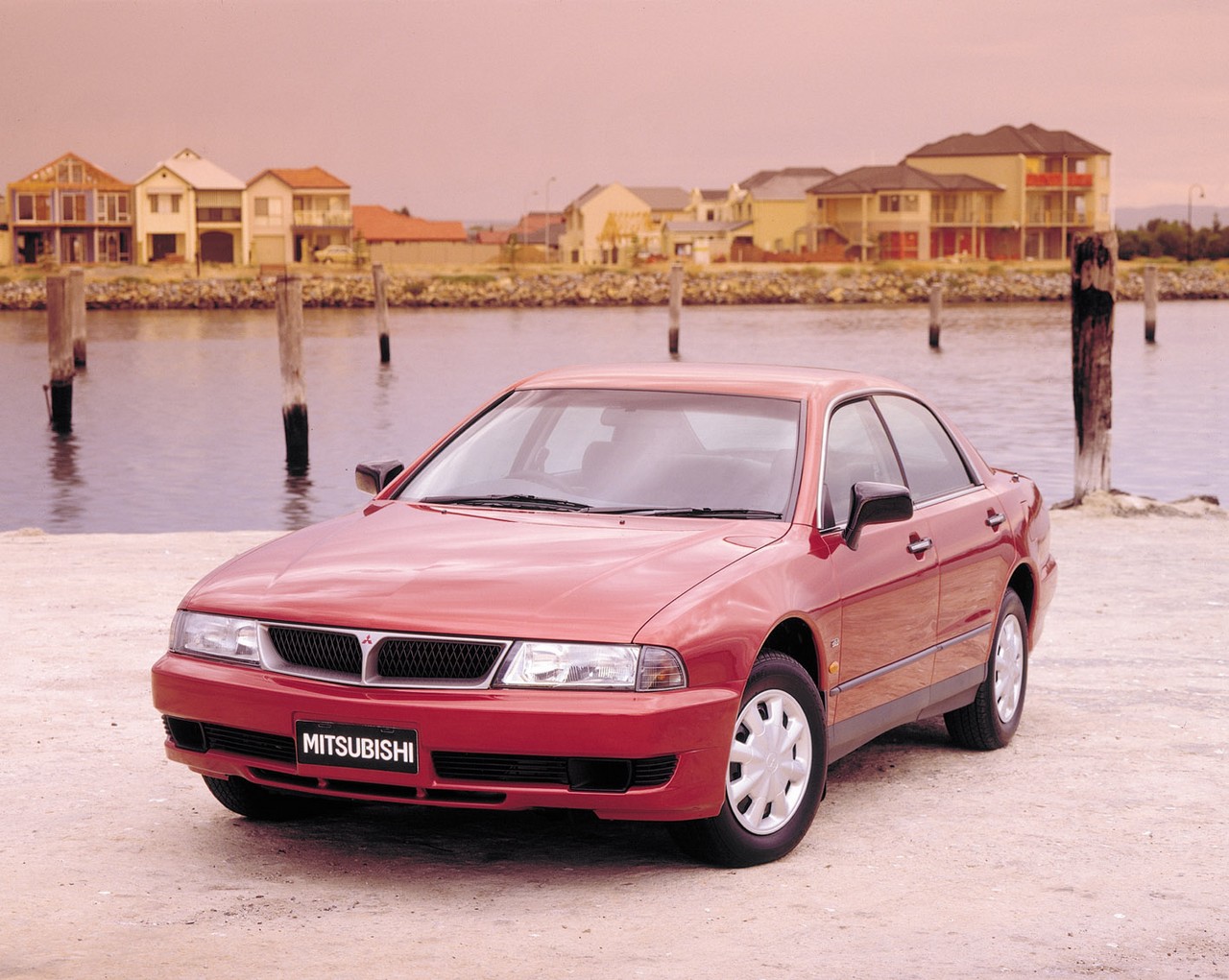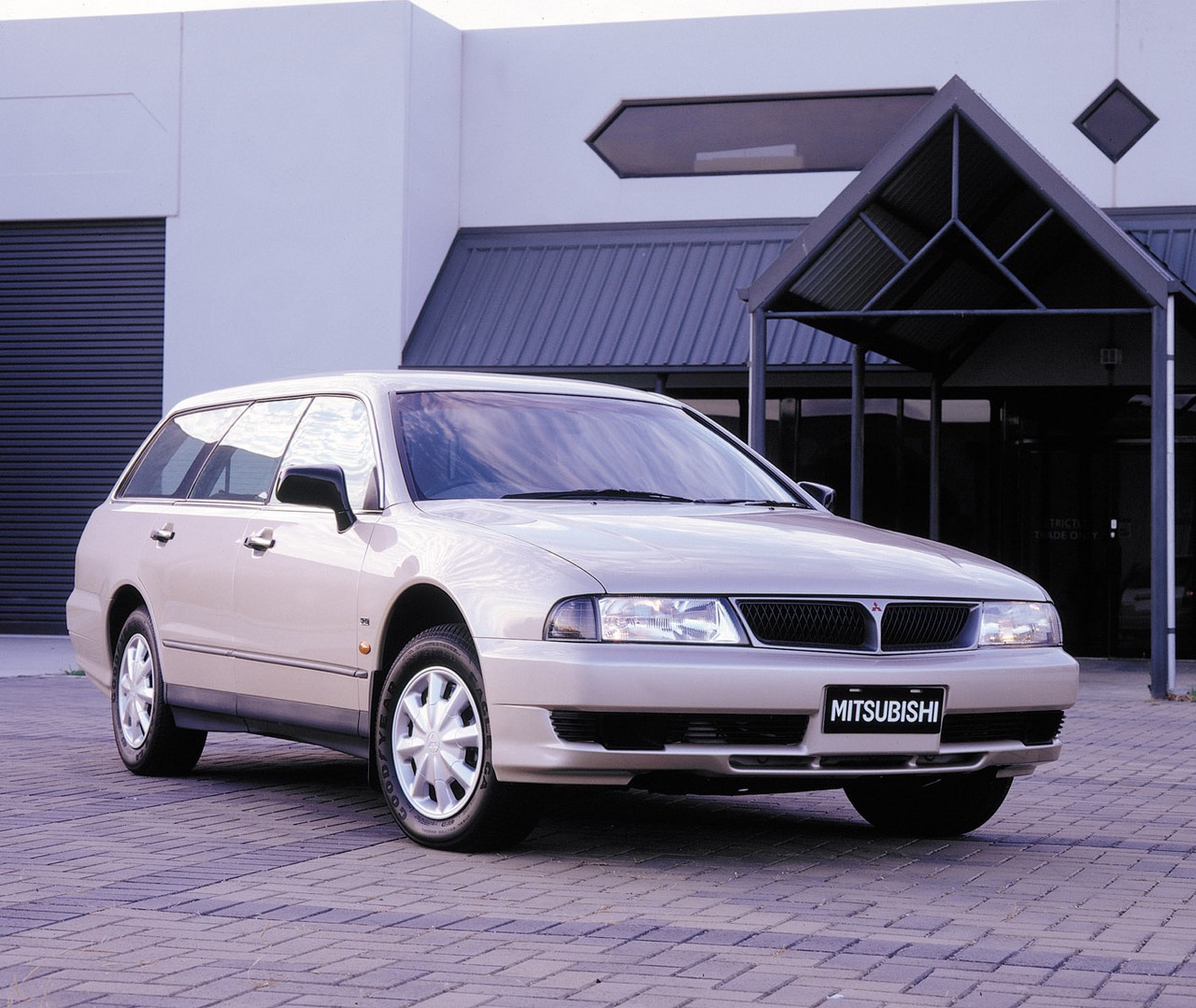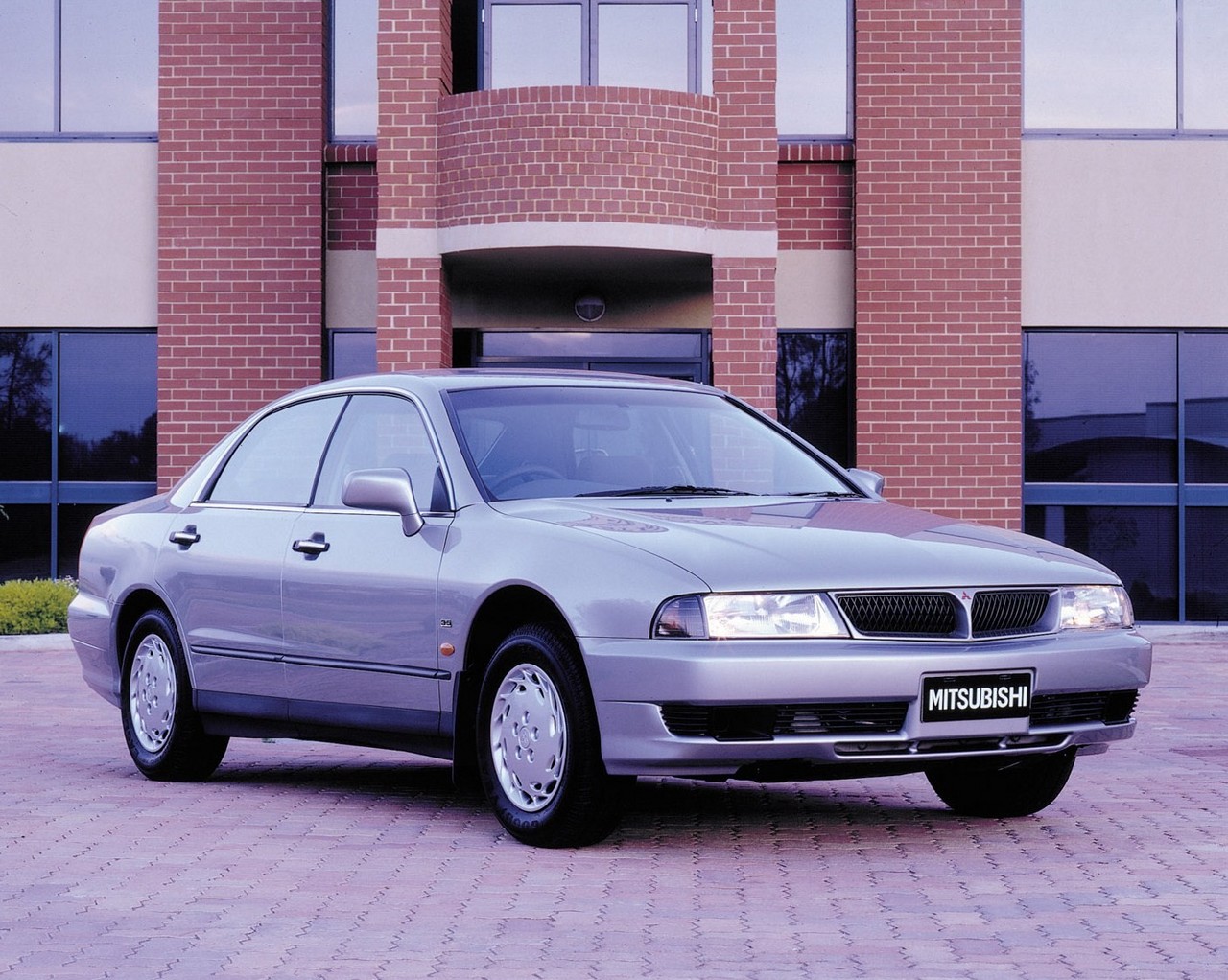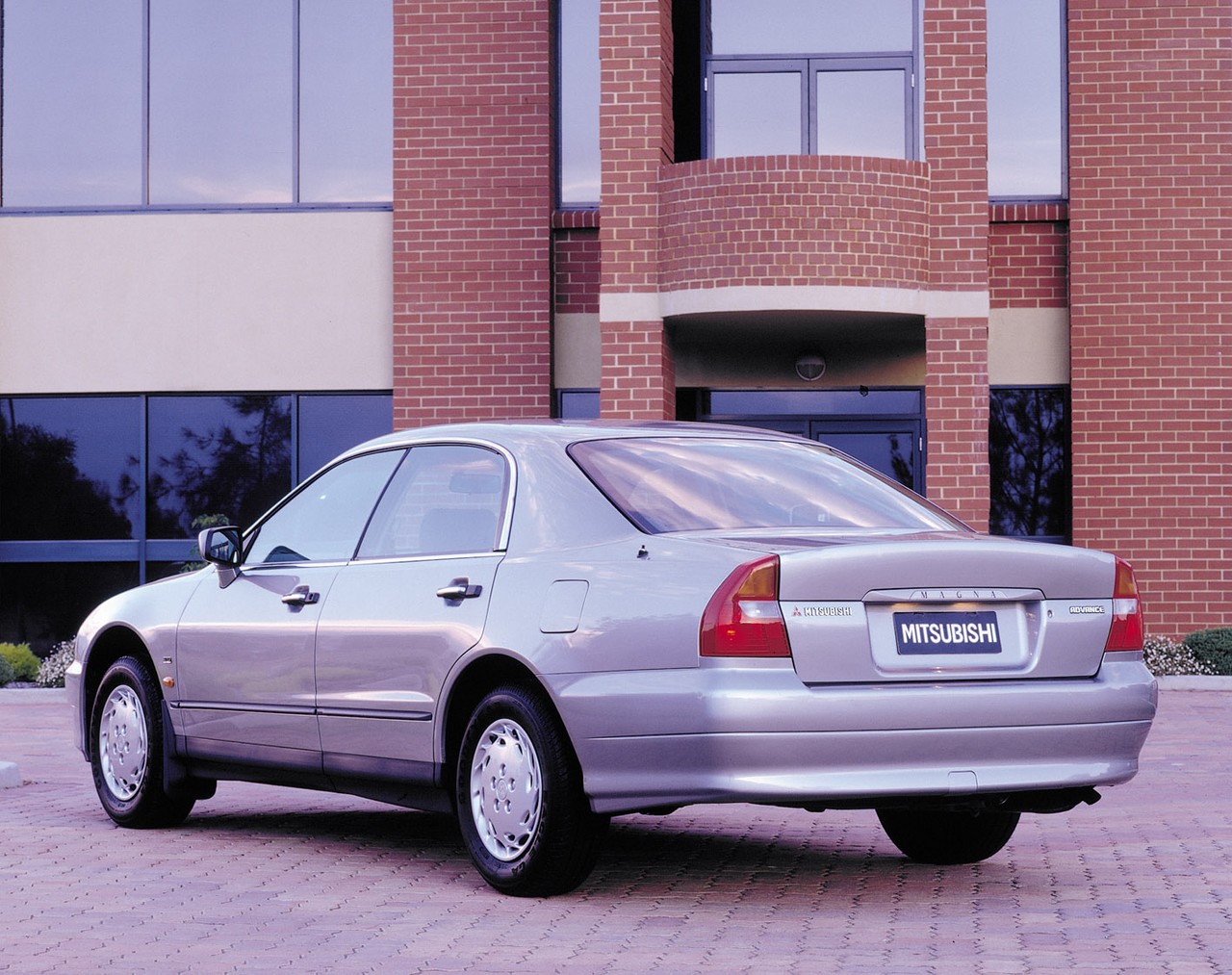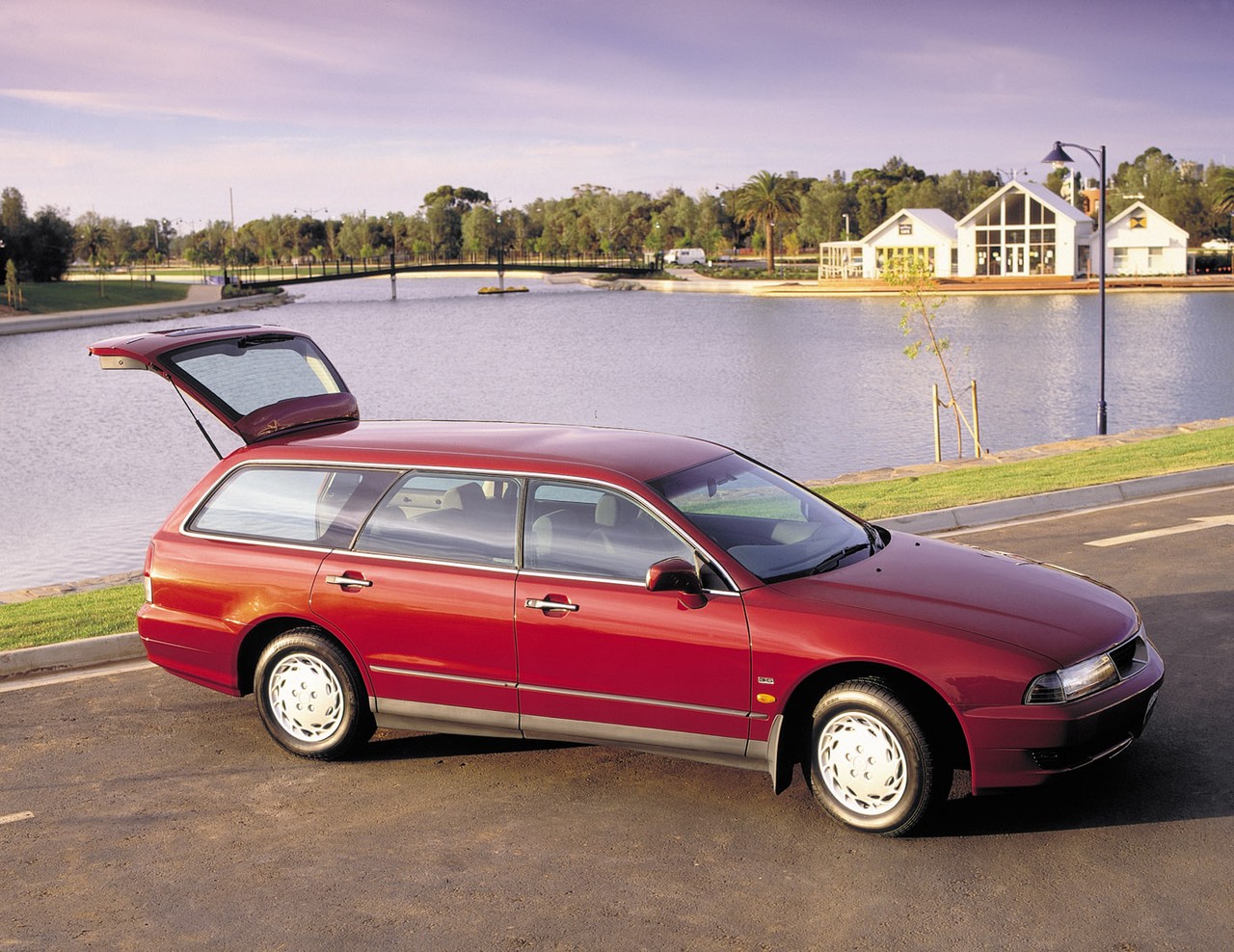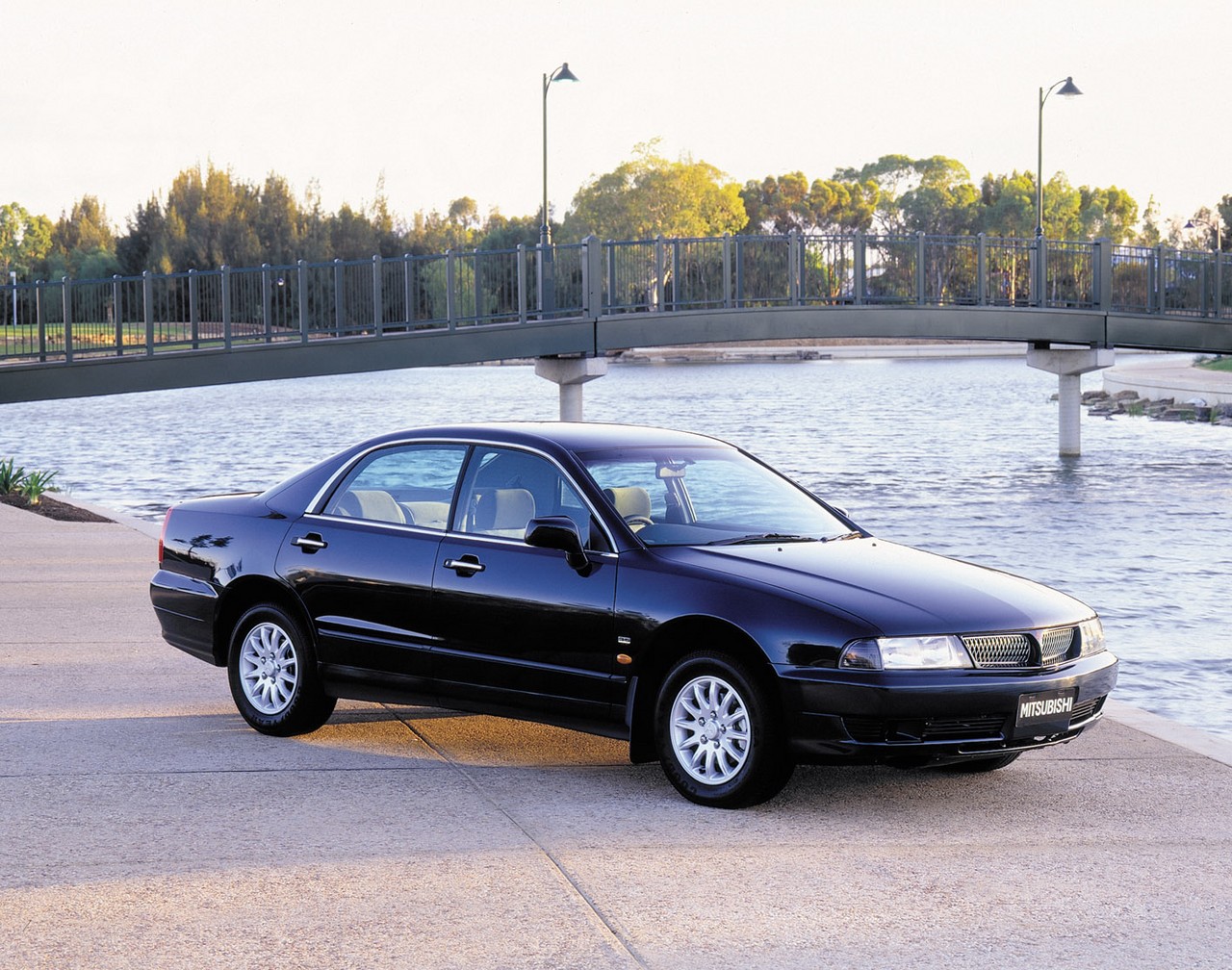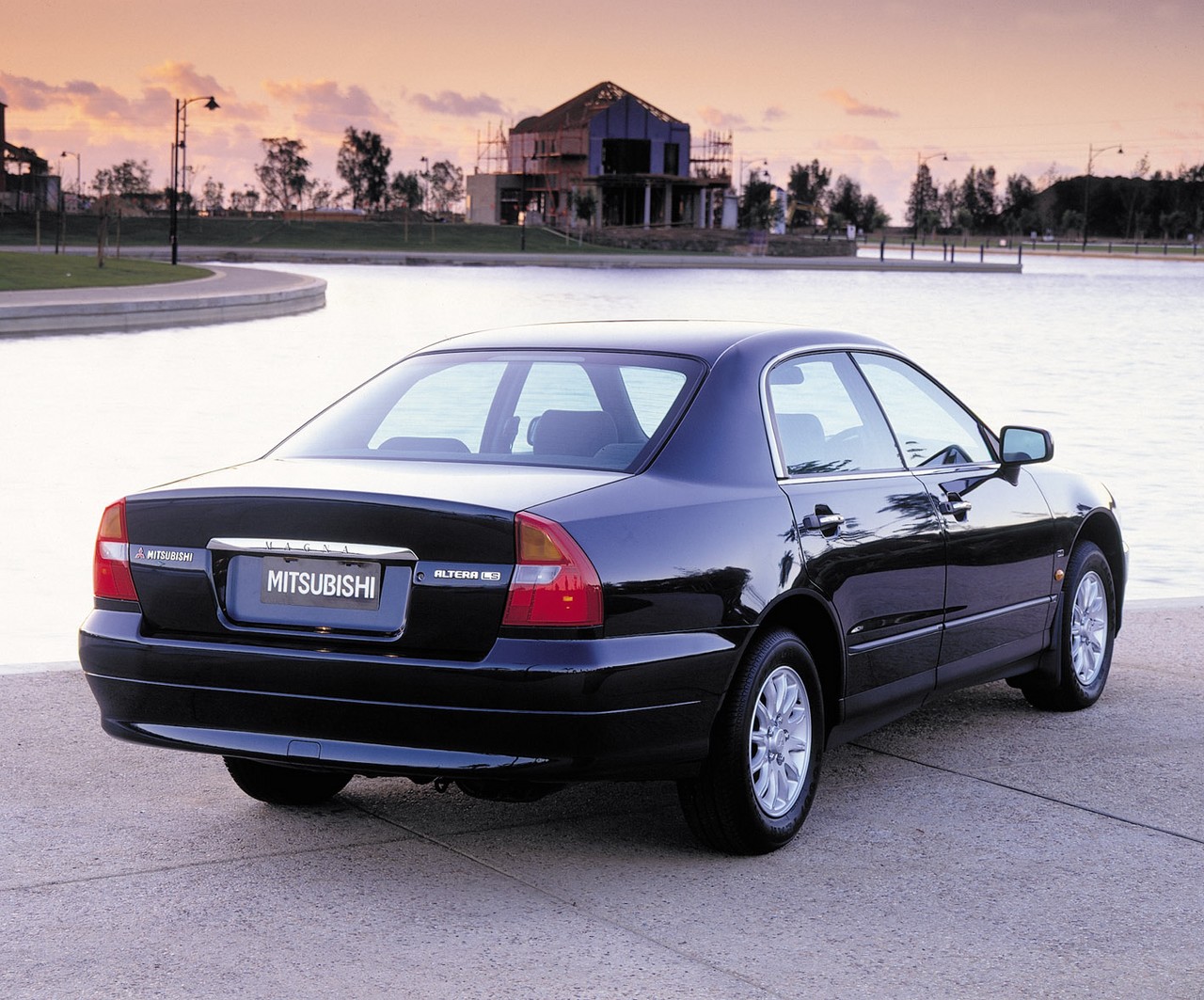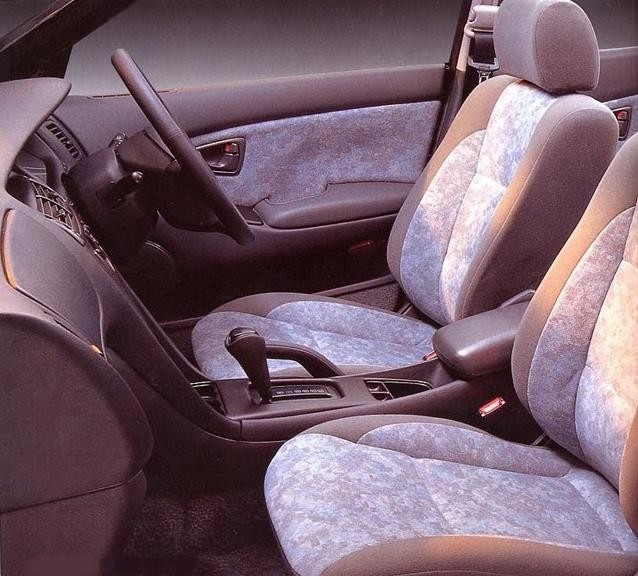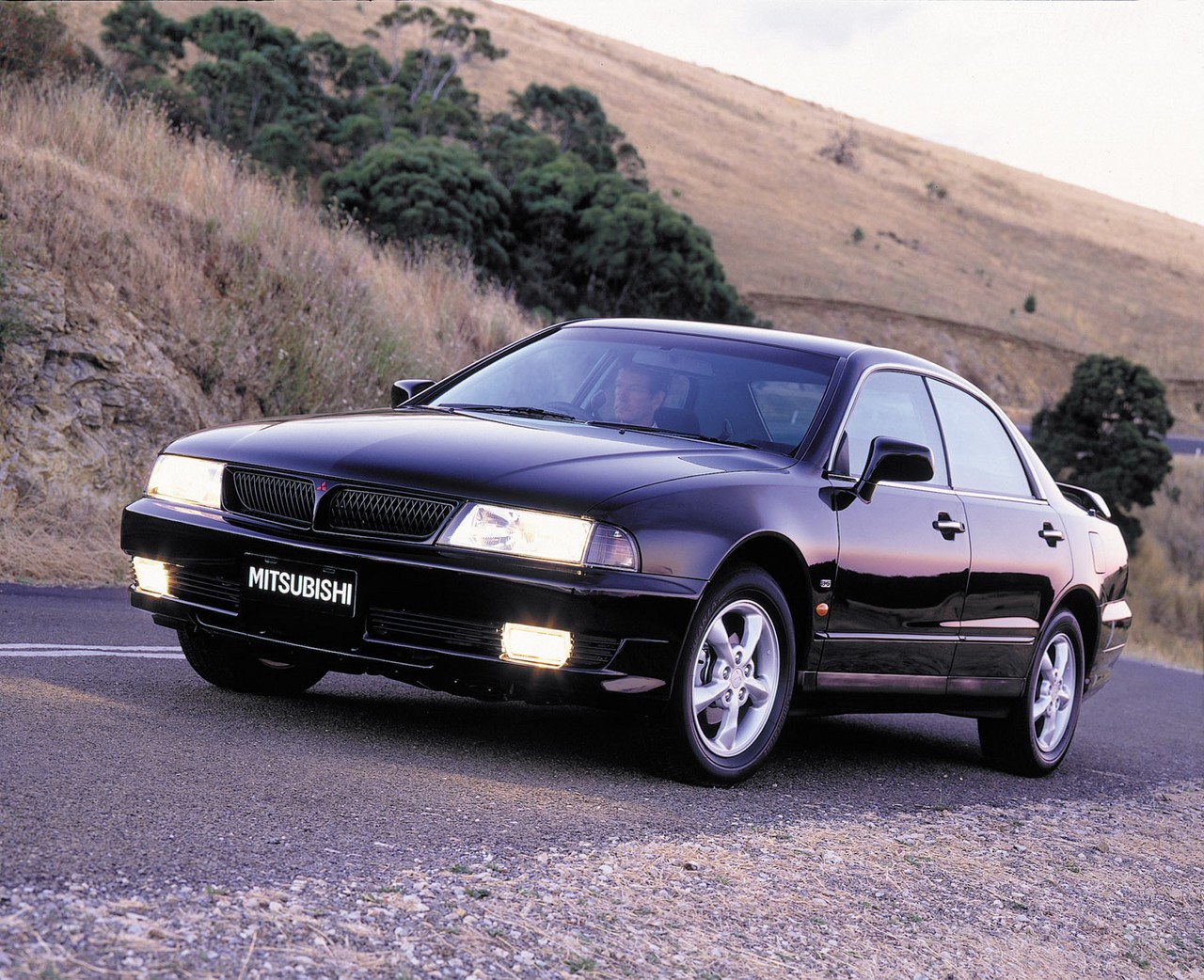
- Refined V6 engines
- Responsive 3.5-litre V6 petrol engine
- Quiet, well-insulated cabin
- Impressive ride/handling balance
- Spacious interior for front occupants
- Steering lacks feel
- Limited rear seat space
- Large turning circle
- Variable interior fit
Overview
Released in April 1999, the Mitsubishi TH Magna was available as a sedan or wagon. Manufactured at Clovelly Park, South Australia, the front-wheel drive TH Magna was powered by either 3.0- or 3.5-litre V6 petrol engines. Both the 3.0-litre 6G72 and 3.5-litre 6G74 V6 petrol engines had a cast iron block, single overhead camshaft, four valves per cylinder and a compression ratio of 9.0:1. Transmission choices consisted of a five-speed manual or four-speed automatic unit, the latter with ‘Smart Logic’ programming which enabled it to adapt to driving conditions and style.
Developments over TF Magna
Compared to its TF Magna predecessor, the TH Magna could be identified by its more aggressive front grille, new tail lights, wheel covers and alloy wheel designs. Inside, there were brighter interior trims, new stitching and ‘Ez Kool’ tinted glass; wagon models were also fitted with a rear arm rest (previously reserved for sedans) – the armrest also featured dual cup holders across the range. Furthermore, four-channel ABS with electronic brakeforce distribution was introduced and standard features were extended to include air conditioning, an eight function trip computer and alarm.
Dimensions and suspension
The TH Magna sedan was 4787 mm long, 1785 mm wide, 1435 mm tall and had a 2722 mm long wheelbase. Relative to the sedan, wagon bodies were 24 mm longer (at 4811 mm) and 47 mm taller (1482 mm).
The TH Magna sedan had MacPherson strut front suspension with lower A-arms and an anti-roll bar and independent, multi-link rear suspension with upper and lower control arms. The TH Magna wagon, however, had a tubular rear axle with four trailing arms and a lateral locating rod.
| Body | Engine | Variant | Trans. | Peak power | Peak torque |
|---|---|---|---|---|---|
| Sedan | 3.0-litre petrol V6 | Executive | 4sp auto, 5sp man. |
140 kW at 5500 rpm | 255 Nm at 4500 rpm |
| 3.5-litre petrol V6 | Executive, Executive LS, Advance, Sports, Solara, V6 Si |
4sp auto, 5sp man. |
147 kW at 5000 rpm | 300 Nm at 4000 rpm | |
| Altera LS | 4sp auto | ||||
| Wagon | 3.0-litre petrol V6 | Executive | 4sp auto, 5sp man. |
140 kW at 5500 rpm | 255 Nm at 4500 rpm |
| 3.5-litre petrol V6 | Executive, Advance, Solara |
4sp auto, 5sp man. |
147 kW at 5000 rpm | 300 Nm at 4000 rpm | |
| Altera LS | 4sp auto |
Safety equipment
Standard safety equipment for the Magna Advance and Altera LS variants included dual front airbags, ABS and electronic brake force distribution.
The Magna Sports omitted the dual front airbags, but was fitted with ABS, electronic brakeforce distribution and – for models with automatic transmissions – switchable traction control and Mitsubishi’s ‘Trace Control Logic’. While traction control (Mitsubishi’s ‘Slip Control’ reduced engine power to reduce front wheelspin under acceleration, Trace Control would reduce power if the inputs indicated that the driver was driving too quickly or aggressively through a corner. However, the Trace Control system relied on inputs from steering wheel angle, throttle position and wheel speed rather than lateral or longitudinal sensors.
ANCAP crash testing
In ANCAP crash testing, a 1999 TF Magna – that was not fitted with airbags – received a ‘marginal’ occupant protection rating; this rating was also applied to the TH Magna. In the full frontal and offset crash tests, protection from serious head injury was poor for the driver and acceptable for the front passenger; protection from lower leg injury was also poor.
Features
Standard features for the Magna Executive included a four speaker sound system with radio and cassette player, air conditioning, speed alert, remote central locking, power mirrors, a height adjustable steering wheel, height adjustable driver’s seat, an eight-function trip computer, an alarm and immobiliser. Beyond this, the Advance added cruise control and power windows.
The Magna Sports was further equipped with 16-inch five-spoke alloy wheels with sports suspension, front fog lights, a leather-wrapped steering wheel and gearshift and rear deck spoiler.
Compared to the Advance, the range-topping Magna Altera LS was distinguished by its 15-inch alloy wheels and six speaker sound system with CD player.
1999 Magna Solara
In December 1999, a limited-run Solara variant was released. Based on the Advance, the Solara was further equipped with 15-inch alloy wheels and a CD stacker (ten-stacker in the boot of sedan, six-stacker under the front seat of the wagon). Visually, the Solara could be identified by its body-coloured grille, mirrors, door mouldings, two-tone paint finish and ‘Solara’ badges.
2000 Magna V6 Si
In April 2000, a limited-run V6 Si variant was released. Compared to the standard Executive, safety equipment was enhanced with the fitment of a driver’s airbag, ABS and electronic brake force distribution. Standard features were also extended to include 16-inch alloy wheels, a six-disc CD stacker, cruise control, unique interior trim and rear deck spoiler.
2000 Magna Executive LS
In May 2000, the limited-run Executive LS sedan was released. Compared to the standard Executive, safety equipment was enhanced with the fitment of a driver’s airbag, ABS and electronic brake force distribution. Standard features were also extended with 15-inch alloy wheels, a six-disc CD stacker and cruise control.
Related links
